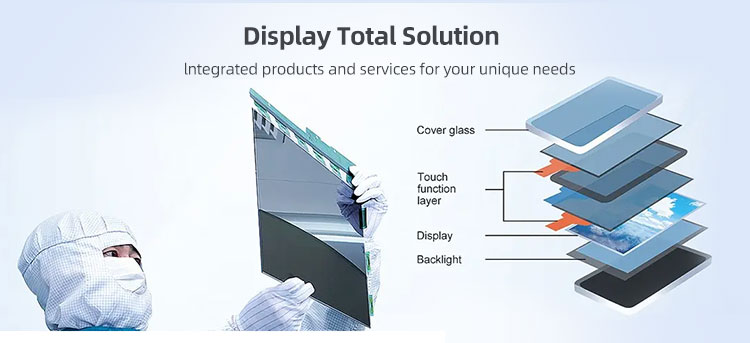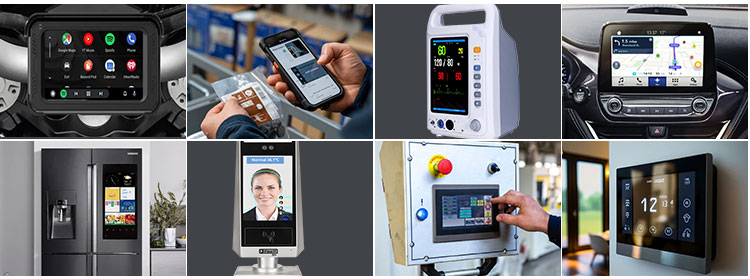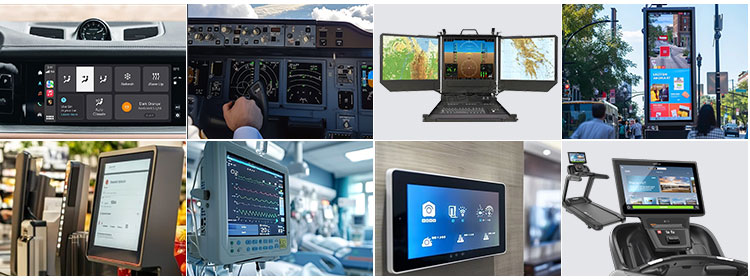

Touch displays come in several types, each using a different method to detect touch. The main types include:
1. Resistive Touchscreen
How it works: Two conductive layers (usually ITO-coated) separated by a small gap. When pressed, they make contact, registering the touch.
Pros: Works with any object (finger, stylus, glove), low cost.
Cons: Lower clarity and multi-touch support; pressure needed.
2. Capacitive Touchscreen
How it works: Uses the body’s natural conductivity to detect changes in an electrostatic field.
Variants:
Surface Capacitive
Projected Capacitive (P-Cap) – supports multi-touch, used in smartphones.
Pros: High clarity, multi-touch, responsive.
Cons: Requires conductive input (bare finger or capacitive stylus).
3. Infrared (IR) Touchscreen
How it works: IR LEDs and photodetectors create a grid of invisible light across the screen. Interruptions register as touch.
Pros: Works with any object, no physical contact needed.
Cons: Prone to false touches (dust/insects), bulkier.
4. Surface Acoustic Wave (SAW)
How it works: Sends ultrasonic waves across the screen. Touch disturbs the waves, which is detected.
Pros: High image clarity, durable glass surface.
Cons: Can be affected by water, dust; more expensive.
5. Optical Imaging
How it works: Uses cameras and infrared light to detect touch by triangulating finger position.
Pros: Works on large displays, multi-touch capable.
Cons: Lower precision; ambient light can interfere.
6. In-Cell / On-Cell Touch
How it works: Touch sensors are integrated directly into the display layers (especially in OLED and high-end LCDs).
Pros: Thinner design, better optical quality.
Cons: More complex manufacturing, harder to repair.


